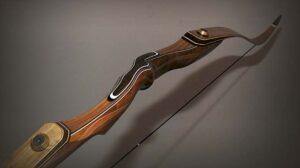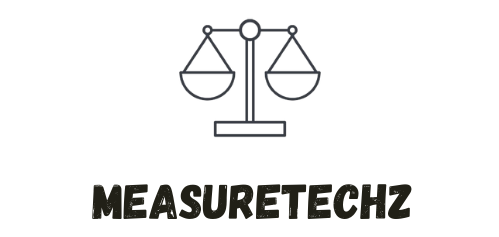Whether you’re a beginner stepping into the world of archery or a seasoned enthusiast looking to refine your setup, understanding how to measure a recurve bow is a fundamental skill. Getting the measurements right can drastically improve your accuracy, shooting comfort, and overall performance.
To measure a recurve bow the right way, you need to know two things: your draw length and the bow’s total length (also called AMO length).
- Draw length is how far you pull the string back when you’re ready to shoot.
- AMO length is the full length of the bow, measured from one string groove to the other, following the natural curve of the limbs not just a straight line.
- Getting these measurements right helps you choose a bow that fits your body and improves your accuracy.
This guide will walk you through the process step-by-step, explain why these measurements matter, and help you avoid common pitfalls. By the end, you’ll have the knowledge and confidence to choose or tune your recurve bow like a pro.
Your draw length is how far the bowstring moves back when you pull it to your full draw.
To measure it exactly, you can use a special tool called a draw length arrow many archery clubs have one you can try. But don’t worry if you don’t have that. A quick and easy way to estimate your draw length is by using your wingspan (the distance from fingertip to fingertip when you stretch your arms out wide).
What Is a Recurve Bow?

A recurve bow is a type of traditional bow that curves away from the archer at the tips. This design allows for more power and speed with less draw weight compared to straight-limbed bows. They are commonly used in Olympic competitions, target archery, and traditional hunting.
Why Measuring Your Recurve Bow Matters
Correctly measuring a recurve bow ensures:
- Proper fit and draw length for the archer.
- Improved accuracy and consistency.
- Safer shooting experience.
- Enhanced energy transfer from the bow to the arrow.
Incorrect measurements can lead to poor shooting form, excessive string slap, and even physical injury over time.
Primary Measurements for a Recurve Bow
1. AMO Bow Length
The most fundamental measurement of a recurve bow is its AMO (Archery Manufacturers Organization) bow length.
How to Measure:
- Unstring the bow for an accurate reading.
- Measure from one string groove (where the string contacts the limb tip) to the other following the natural curve of the limbs, not straight across.
- The measurement is typically rounded to the nearest inch.
- A bow marked as “AMO 68” is approximately 68 inches long from tip to tip.
Tip: AMO standards assume that the string length is about 3 inches shorter than the bow length.
2. Draw Length
Your draw length is the distance from the nocking point (on the string) to the pivot point of the grip (the deepest part of the bow’s grip), plus 1.75 inches.
Measuring Your Draw Length:
- Stand upright with your arms extended sideways.
- Measure the fingertip-to-fingertip distance in inches.
- Divide this number by 2.5.
Example:
- Wing span = 70 inches → Draw length = 70 ÷ 2.5 = 28 inches
- Knowing your draw length is crucial for choosing the right bow size and arrow length.
3. Brace Height
Brace height is the distance between the string and the bow’s deepest grip point when the bow is strung.
Ideal Range:
- For most recurve bows: 7.5 to 9.5 inches, depending on the bow’s length and limb design.
Measuring:
- Use a bow square (T-square tool) to measure from the string to the pivot point.
Matching Bow Length to Draw Length
Choosing the right bow length based on your draw length is key for optimum performance:
| Draw Length (inches) | Recommended Bow Length (AMO) |
|---|---|
| < 26” | 62” – 64” |
| 26” – 28” | 66” – 68” |
| 28” – 30” | 68” – 70” |
| > 30” | 70” – 72” |
A longer bow is generally smoother and more forgiving to shoot, especially for longer draw lengths.
Additional Measurements and Considerations
1. Limb Length
Limb length can be short, medium, or long depending on your riser size. It impacts draw smoothness and speed.
2. Tiller
Tiller refers to the difference in distance between the string and the limbs at rest. It’s used to balance the bow for finger shooting.
- Typically, the top limb tiller is 1/8” to 1/4” greater than the bottom.
Tools Needed to Measure a Recurve Bow
- Measuring tape or flexible ruler
- Bow square (T-square)
- Draw length indicator arrow
- AMO specs from manufacturer (if available)
Common Mistakes to Avoid
- Measuring across the bow: Always follow the limb curve for AMO length.
- Ignoring draw length: Using a bow that’s too short or too long affects accuracy.
- Skipping brace height check: Can lead to poor arrow flight and string slap.
- Relying only on labels: Manufacturer-marked lengths can vary slightly.
Real-World Example: Why Proper Measurement Matters
Meet Sarah, a beginner archer who bought a 62” bow without measuring her draw length. After struggling with accuracy and experiencing discomfort, she measured her draw length at 30”. She switched to a 70” bow and saw immediate improvement in her form and grouping.
Visual Recommendations
To improve scannability and engagement, consider adding:
- Infographic: Bow length vs. draw length chart.
- Photos or diagrams: Showing where to measure brace height, draw length, and AMO length.
- Video embed: Demonstration of measuring with a bow square.
- Alt Text Tip: Use alt text like “How to measure draw length on a recurve bow” for each image.
FAQs About Measuring a Recurve Bow
Q: Can I use a measuring tape instead of a bow square?
- A: Yes, but a bow square provides more precise brace height measurements.
Q: Does bow length affect arrow speed?
- A: Yes. Shorter bows typically produce faster arrows but can be less stable. Longer bows are smoother and more forgiving.
Q: Can I change my draw length?
- A: Slight adjustments are possible with form changes, but your natural draw length is based on body structure.
Conclusion
Measuring a recurve bow correctly is more than just a technical step it’s a foundational part of your archery journey. Understanding AMO length, draw length, and brace height ensures better accuracy, comfort, and safety.
Take the time to measure your equipment accurately and invest in tools that support your archery goals. Whether you’re shooting for sport, competition, or leisure, precision starts with proper measurement.

